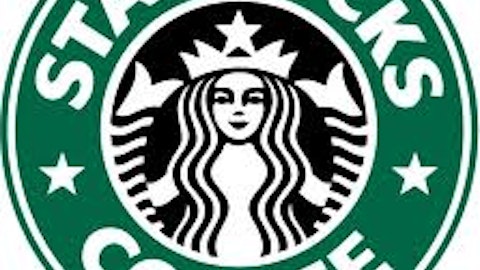Individual investors tend to do poorly when we go it alone, underperforming the market, if not outright losing money. Add in that maybe more than 70% of the thousands of mutual funds out there also underperform the market, and it leaves many wondering if the system is rigged against us “little guys.” And if it is, why bother investing in the market at all?
And while some would argue that may be the case, that’s not the reason we can’t beat the market: it’s our own fault. But there is hope, and I’ll give you some ideas that can make all the difference.
Mutual fund underperformance: that’s your fault, too
The so-called experts that run most mutual funds also can’t beat the market, and are often derided for this. I think at times this is unfair, because it’s not their fault. The truth?
You won’t let them.
Mutual fund managers only control when they can buy a stock. Investors like you and me decide when they have to sell. Let me explain.
Let’s take American Funds Growth Fund of America A (NASDAQMUTFUND:AGTHX) as an example. Over the past 20 years it has returned over 200%, while the S&P 500 and Dow have returned over 250% and over 320%, respectively. Fees have had an impact on its long-term performance, but much of its underperformance over the past two decades is a result of behaviors by individual investors in the fund, which means you.
Let’s assume you own shares of this fund in your 401(k), and it’s August, 2008. And you see this headline:
Stocks Fall on Weak Economic Data
The unemployment rate rose to 5.7%, and General Motors reported a $27-per-share quarterly loss … Stocks fell Friday after a $15.5 billion loss reported by General Motors (GM), and a mixed bag of economic data that included an uptick in the unemployment rate to 5.7% in July.
Your 401(k) is down 20% from the market’s peak in less than a year. You see headlines like the one above every day. You decide to move out of “risky” investments and into bonds, forcing the fund managers at American Funds to sell stocks when you wanted them to. They have to pay your 401(k) back in cash so you can use it to buy those bond funds. Guess what? You just made the “sell” call.
Multiply your cold feet by how many other tens of thousands of people get spooked, and this is what crashes markets, creating a “feedback loop” of more selling, heavily influenced by Main Street investors selling out of those risky mutual funds. This creates more panic and selling, which forces yet more selling.
It’s like pulling the airline pilot out of the cockpit when the engine fails, and grabbing the controls yourself–it’s a pretty good way to guarantee a crash. Heck, you just helped make sure it happens faster.
A couple of charts showing Growth Fund of America’s performance:
1993-2003

Source: Yahoo! Finance
Interestingly enough, Growth Fund of America has outperformed the market over the last decade:
2003-2013

Source: Yahoo! Finance
How do we know which performance we’ll get over the next decade? Much of it depends on you, and a few hundred thousand total strangers. It’s not the manager’s fault when you make them sell in a down market — that’s squarely on you.
Going it alone leads to the same result: losing
Famed investor Peter Lynch has long held that we can beat the market.The real irony is that many of the investors in Lynch’s own Fidelity Magellan fund (which averaged almost 29% annual growth during his time in control) actually underperformed against the market because of jumping in and out at the wrong times, even as the fund soundly outperformed the market.
The problem remains: most of us won’t bother to do what it takes. Lynch famously said we’ll spend more time picking out a microwave than we will picking out a good investment, and he’s right. And it’s mostly because we have no clue what we’re doing, despite out best efforts to make decisions like we do.
Case in point: you’re looking to invest $1,000, and you’re using a common valuation metric–Price to Earnings, or PE. You have three companies you are comparing, with the following PE ratios:
- 18
- 41
- 3,430 (you read that right)
Let’s say you’re really smart, and you’re using forward PE, which uses next year’s projected results:
- 17
- 14.5
- 211
For those uninitiated, typically the lower the PE, the better “value” a stock is considered. Instead of telling you the names of the companies above, here’s how they have performed since the IPO of Amazon.com, Inc. (NASDAQ:AMZN):
MCD Total Return Price data by YCharts
Yes, this is cherry-picking, but I want to make a couple of key points:
- Valuation metrics are misleading, and not one-metric-fits-all. PE isn’t usually good for valuing banks like Bank of America Corp (NYSE:BAC), as compared to, say, Price/Book. And some say that Price/Sales is a better measure of Amazon.com, Inc. (NASDAQ:AMZN) than PE, as it’s more closely correlated to past performance and share price appreciation. McDonald’s Corporation (NYSE:MCD), on the other hand, is probably a good company to use PE with, but in the right context of looking at it’s historical valuation to find a good value for shares.
- Mister Market doesn’t understand valuation, and doesn’t care about it. Accepting this, and instead using this knowledge to make your investing decisions, will keep you sane and help you actually beat the market. Railing against the market because it’s “wrong” is just small-f foolish.
- Don’t forget that the most important part of the picture is the business behind the numbers. Of these three, Amazon.com, Inc. (NASDAQ:AMZN) will almost certainly have the highest growth rate over the next decade, if not two decades, and it should reward shareholders the most if this happens.
To channel my inner David Gardner, sometimes past results are the best indicator of future results for companies. Simply put, winners keep winning in many cases. It’s our fear that we’ve “missed the boat” that leads us to overlook the best performers.







